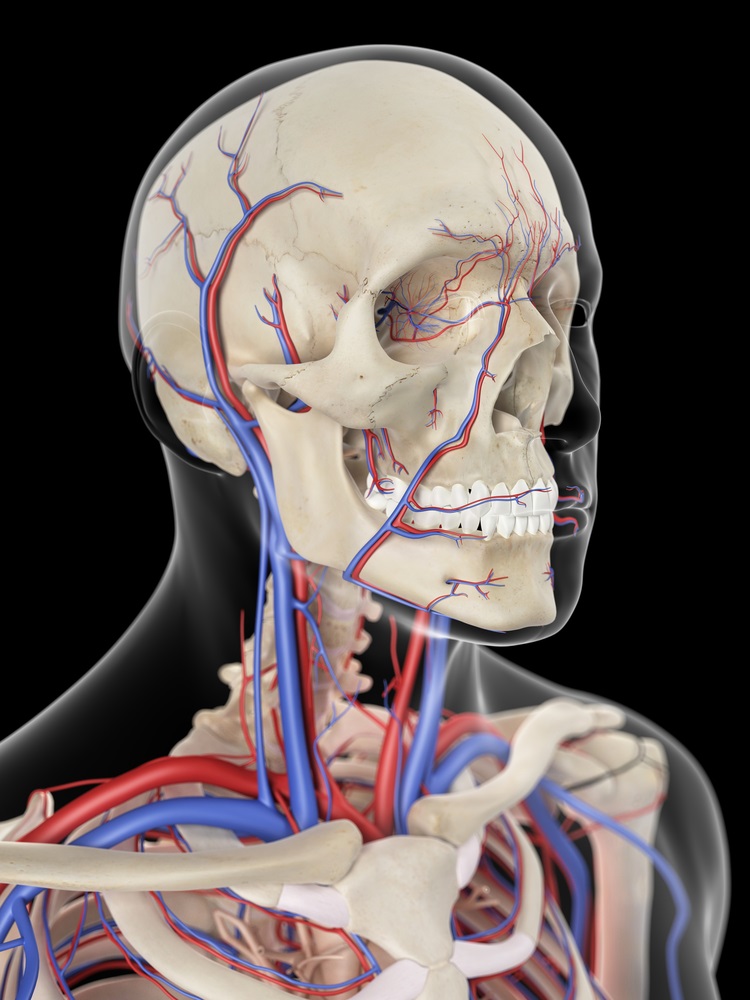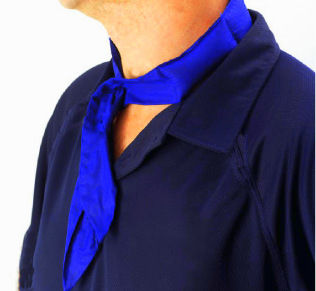Heat Stress & Personal Cooling Devices – Neck Collars
- By Ross Di Corleto
- 02/08/2015
- 6 Comments
Ever wondered how effective those neck cooler ties are? They have evolved a long way from workers on construction sites with a wet handkerchief draped around their necks.
I can remember seeing the World Series cricketers first wearing them on the playing field in one of the hot summer games in Australia in the late 1970’s. It is still not unusual to see people in sporting events wearing more recent versions. So what’s the theory behind them and do they really work?
Part of the logic is based on the fact that the neck happens to be an area where some very major blood transporting highways for the body are located, (i.e. carotid artery & jugular vein). Hence the theory is that by cooling the neck we cool these major blood flows and hence get a lowering of the core temperature as the blood circulates. Unfortunately it’s not that simple. The surface area covered by some of these collars and the blood flow rate may not allow for enough contact time for a significant heat exchange to take place to lower the core body temperature.
In a paper by Gordon et al (1990) the result came out in favour of the use of the neck bands. From their study with 10 male endurance athletes they concluded that there was a small lowering in temperature (approx 0.2° C) that may be of potential benefit.
On the other side of the fence in a study by Gabrys et al (1993) where they investigated the collars, they concluded: “….neck cooling does not lower the inner body temperature, presumably due to a too small the cooled area to effectively improve the heat exchange in exercise.” A number of other studies (Bulbulian et al, 1999; Tyler et al, 2011; Ando et al, 2015) also seem to reach the same conclusion in their investigations.
But if they were not effective, why do so many people continue to use this approach? There is probably some benefit achieved from the method but based on what is out there in the literature in these and other studies, they are not nearly as effective as was first thought.
There is however another interesting aspect that is coming to light in studies. Neck coolers may have a subjective or “feel good” benefit. Tyler et al,(2011) suggest “…it does improve the subjective rating of thermal comfort, and this improvement in thermal comfort may improve performance by masking the thermal strain of the body.” But there is a limit to the extent to which “….mechanisms that regulate exercise in the heat can be deceived”. Bulbulian et al (1999) also had a similar finding: …….the perceived comfort was better in those subjects who had their necks cooled.”
So whilst there still doesn’t appear to be conclusive scientific evidence of the ability of neck cooling collars to reduce the body’s core temperature by a significant amount there may still be some benefit achieved.
BOTTOM LINE:
Neck coolers may only have some limited benefit as far as cooling but there is also likely to be a subjective or “feel good” component to this.
WANT TO KNOW MORE?
- Bulbulian, R., Shapiro,R., Murphy,M., & Levenhagen, D.,(1999. ) Effectiveness of a Commercial Head-Neck Cooling Device. Journal of Strength and Conditioning Research, 1999, 13(3), 198–205
- Gabrys, J., Pieneazek, W., Olejnik, I., Pogorzelska, T., Karpe, J., (1993). Effects of local cooling of the neck on circulatory responses in men subjected to physical exercise in hyperthermia. Of Sport Vol 10. No3
- Ando, S., Komiyama, T., Sudo, M., Kiyonaga, A., Tanaka, H., and Higaki, Y., (2015) The effects of temporal neck cooling on cognitive function during strenuous exercise in a hot environment: a pilot study. BMC Research Notes. Vol 8:202

 Copyright © 2023
Copyright © 2023
Thanks Ross another really handy post. I have quite a few people using the neck collars in hot weather. The vast majority would say they felt cooler and more comfortable, even though we have discussed they are probably having little physiological effect. From a comfort point of view particularly on breaks I think they have some value.
Thanks Stuart,
It’s always good to get feedback from actual use in the field. We used them at a site in the Northern Territory with mixed success. As long as people are aware of their limitations they have their place in the scheme of things.
How do I buy some of these
They are usually available at most safety equipment stores
Scarves work very well to keep you warm. It’s not illusion or delusion. They do work. Why wouldn’t the opposite hold true?
Agree but scarves cover a larger area of the neck and hence surface and key blood vessels in the area. If the same size of cooling covering was used it is quite possible that you would get a significant effect. Problem is that such a covering would be uncomfortable to wear as the cooling systems are not soft and comfortable as scarves. Individuals may find that the current form of neck cooling devices provide relief and that has been observed. Just that there has not been a lot in the way of peer reviewed research published in the literature that supports the theory.